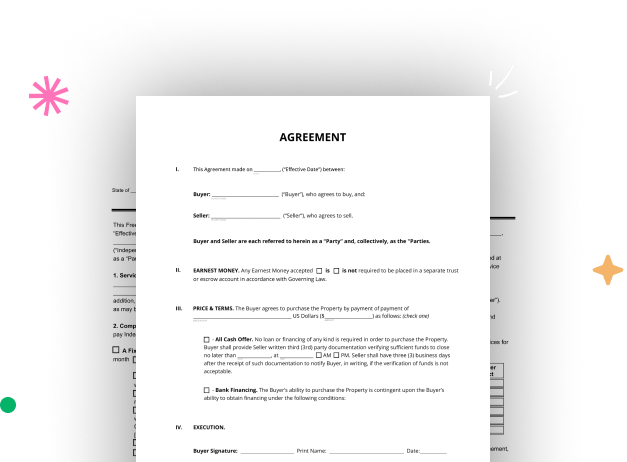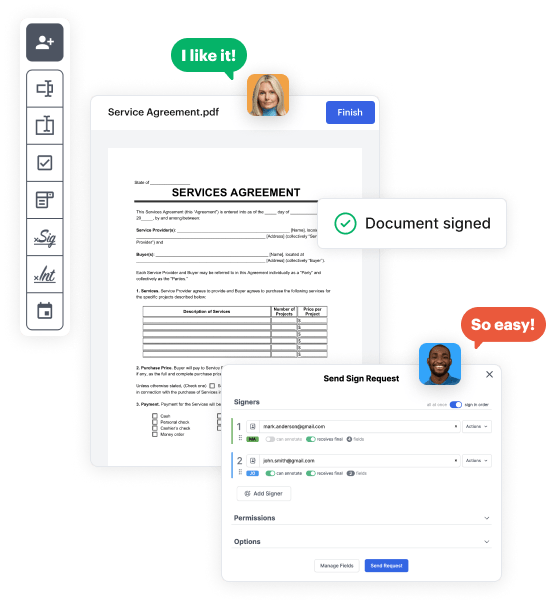

Begin by registering a free DocHub account using any available sign-up method. Just log in if you already have one.
Try out the whole collection of DocHub's advanced features by signing up for a free 30-day trial of the Pro plan and proceed to build your Landlord Tenant Commercial Agreement.
In your dashboard, choose the New Document button > scroll down and choose to Create Blank Document. You will be taken to the editor.
Utilize the Page Controls icon marked by the arrow to toggle between different page views and layouts for more flexibility.
Navigate through the top toolbar to place document fields. Add and format text boxes, the signature block (if applicable), add photos, and other elements.
Configure the fillable areas you added based on your desired layout. Personalize the size, font, and alignment to ensure the form is straightforward and professional.
Save the ready-to-go copy in DocHub or in platforms like Google Drive or Dropbox, or design a new Landlord Tenant Commercial Agreement. Share your form via email or utilize a public link to engage with more people.